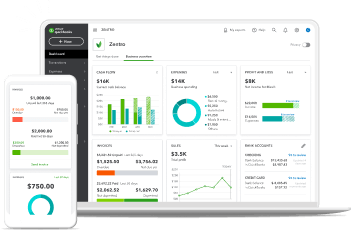How to calculate overhead costs
Next, we’ll explain how to calculate total overhead costs using the formula.
To calculate your overhead costs accurately, you’ll need to allocate them to the right areas of your business. Start by identifying all overhead expenses (fixed, variable, and semi-variable) that relate to the same product, service, or department. This ensures you’re only including the costs that truly support that specific area.
Once you’ve gathered these details, follow the steps below to calculate your overhead rate:
1. List all indirect expenses
Make a complete list of every overhead cost your business incurs. This includes rent, utilities, insurance, administrative wages, and other indirect costs that help keep your business running (but don’t directly produce a product or service).
2. Add up total overhead costs
Add all these indirect expenses together to find your total overhead cost. This gives you the total amount you spend on overhead for a specific time period (monthly, quarterly, or annually).
3. Determine the allocation base
Choose a measure that best reflects how your overhead costs relate to your business activity. This could be direct labour hours, machine hours, or sales revenue, depending on your industry.
For example, a manufacturing business might allocate overhead based on machine hours, while a service business may use labour hours.
4. Calculate the overhead rate
Use the formula:
Overhead Rate = Indirect Costs ÷ Allocation Measure
This will show you how much overhead is applied per unit of your chosen base (for example, per labour hour or per RM1 of sales). The result helps you understand how efficiently your resources are being used and how overhead impacts your overall costs.
Example of calculating overhead costs
Let’s look at a simple overhead cost example for a manufacturing business in Malaysia.
Imagine a small furniture manufacturer that wants to find out how much of its labour cost is spent on overhead. The business first adds up all indirect expenses for the month, including factory rent, utilities, equipment maintenance, and administrative salaries.
Example:
- Total Overhead Costs: RM40,000
- Direct Labour Costs: RM160,000
Now, apply the formula:
Overhead Rate = (40,000 ÷ 160,000) × 100 = 25%
This means 25% of your labour costs are spent on overhead. In other words, for every ringgit spent on direct labour, RM0.25 goes toward indirect business expenses like rent, utilities, or admin support.
Top tip: Accounting software such as Intuit QuickBooks can make your financial reporting and business financial management much easier.






